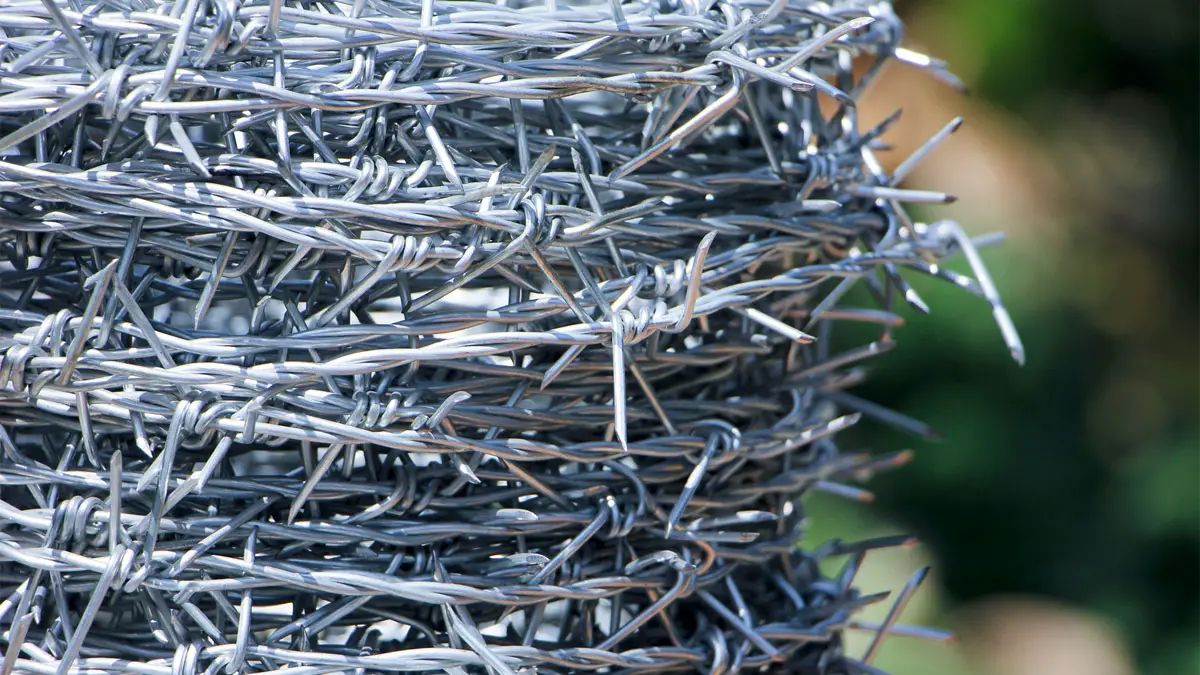Commonly associated with war and prisons, barbed wire is a type of barrier that injures anyone or anything trying to go through it.
Sometimes referred to as barb wire (although nobody named Barb was ever associated with it), the origin of this nifty innovation has been lost to time, although the first widely available barbed wire product was released in 1863. Unfortunately, due to poor advertising, the idea was swiped ten years later by someone who knew how to market a product and barbed wire forever became associated with the name Glidden.
Barbed wire is generally ranked into three main classes.
- Class 1 is the most common but also the weakest. These tend to only last 11 years max.
- Class 3 is thicker and can last up to 30 years.
- Class 40 includes galfan barbed wire and can last as long as 50 years before needing replaced.
Despite how basic the concept is (a wire with metal barbs wrapped around it), there’s actually a lot of variation to how barbed wire is made.
From how many strands in the line to how many barbs are grouped together, the material or coating used, and even the technique used in twisting the strand give barbed wire an incredible amount of variation. Here are 17 different kinds to make this point stick.
See Also: 15 Different Types of Spears
Types of Barbed Wire
1. Concertina Barbed Wire
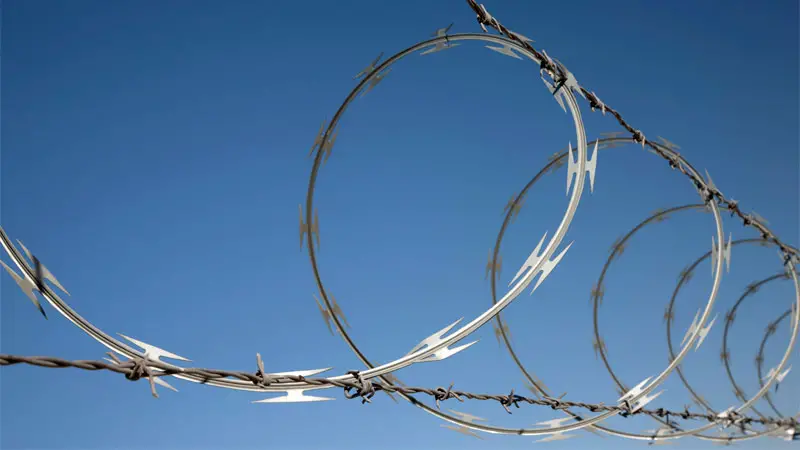
When you think of a battlefield in WWI or WWII, you’ll likely picture an ancestor of concertina barbed wire barriers. Made of high-grade steel, this version of razor wire comes in tight coils that can be stretched like a concertina, hence the name.
Also referred to as Dannert barbed wire, this barrier is self-supporting and can be stapled in place. It’s often used in high-security areas and military training courses due to the amount of damage it can inflict.
2. Conventional Twist barbed Wire
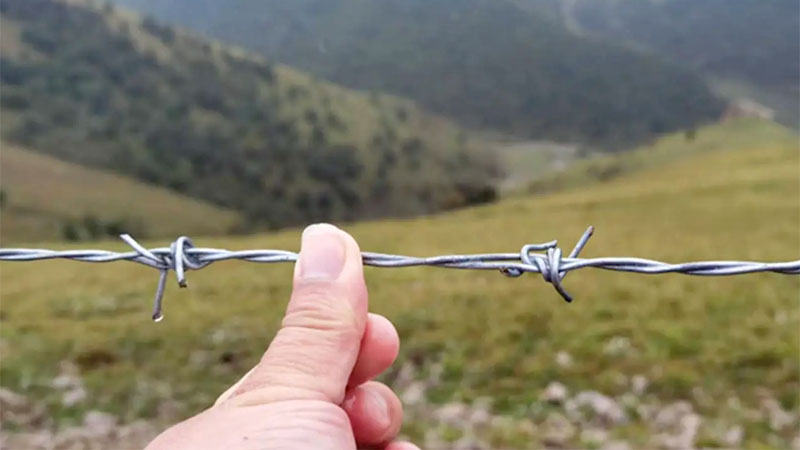
Sometimes referred to as traditional twist barbed wire, this is a popular twisting technique in which the barbs are twisted in a single direction. Using this method is cheap while still providing good durability and functionality.
Oddly enough, the barbs are twisted between the strands instead of around them. This provides a bit of gap in a double strand where the barbs are located.
3. Double Barb Wire
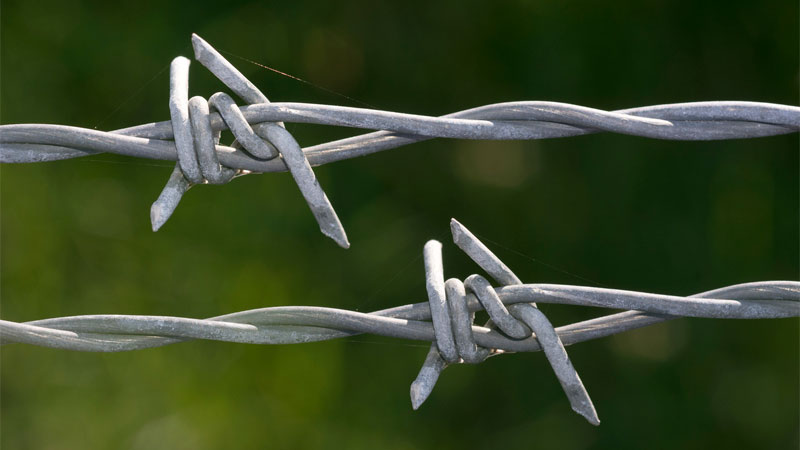
Sometimes referred to as four-point barbed wire, this variation has two short pieces of wire that are wrapped around the main strand in either the same or opposite directions. The result is four sharpened ends instead of the two of single barbs.
The additional points of the barb make it harder for an intruder to pass through the barrier uninjured.
4. Double Strand Barbed Wire
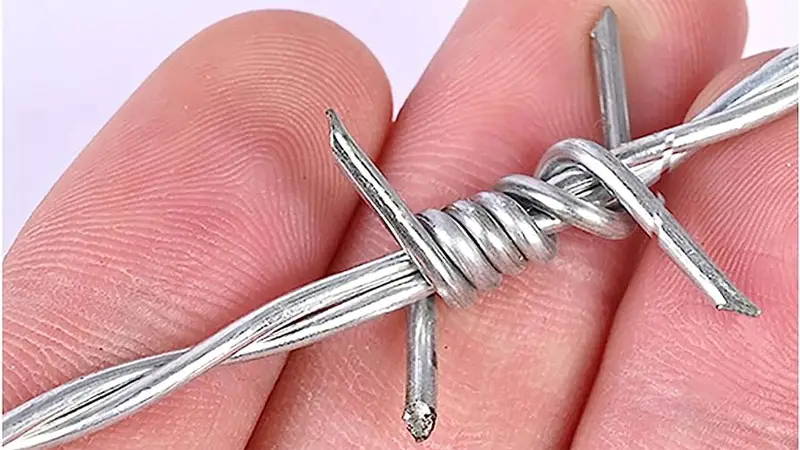
Double strand barbed wire is something of a staple among enthusiasts due to its increased strength. The two wire strands are twisted together, giving it greatly increased durability. The barbs are evenly spaced along the line.
Double strand lines can bear more weight before breaking and are also more resistant to tampering than their single strand counterpart. You’ll commonly see this type of barbed wire being incorporated into cattle fencing.
See Also: 32 Different Tape Types
5. Galfan Barbed Wire
While the name sounds like something out of an RPG, galfan is just the nickname for zinc aluminum alloy coated steel. The alloy is mostly zinc with either five or ten percent aluminum added to make it a bit more durable than normal zinc coating.
6. Galvanized Barbed Wire
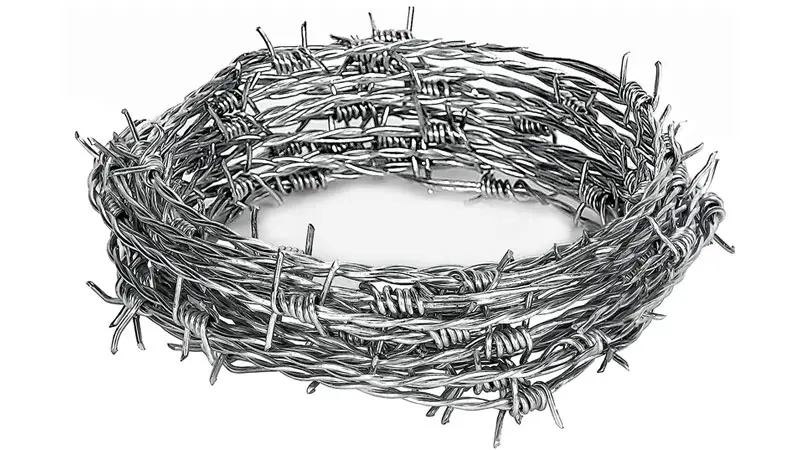
Galvanized steel is a cheap and highly durable material. The galvanization process adds a protective zinc coating to the steel wire, making it even more resistant to corrosion. Galvanized barbed wire is often referred to as zinc-coated steel barbed wire.
Read Also: 13 Types of Crossbows
7. High Tensile Steel Barbed Wire
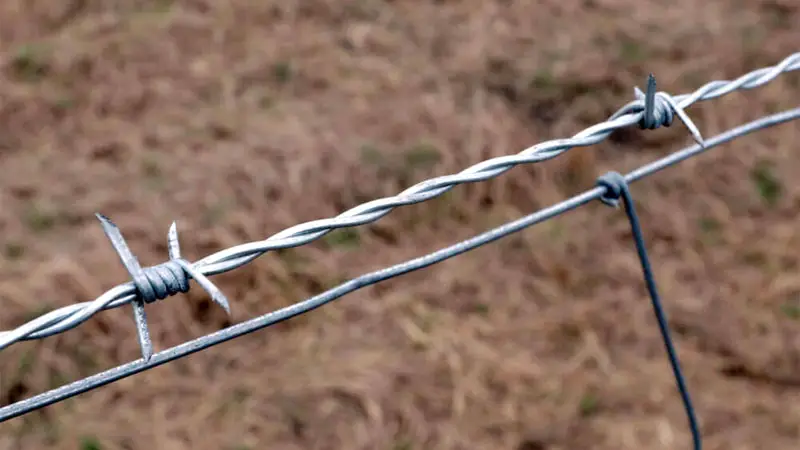
While stainless steel is certainly one of the most popular options out there, high tensile steel is certainly worth the extra investment. This steel is made with a higher carbon content, making it much stronger than regular steel.
As a result, high tensile barbed wire is thinner and lighter than regular or stainless steel while actually being stronger and more durable. The barrier is far less likely to break under pressure or when something collides with it. This makes high tensile barbed wire a popular choice for high security areas.
8. Iron Barbed Wire
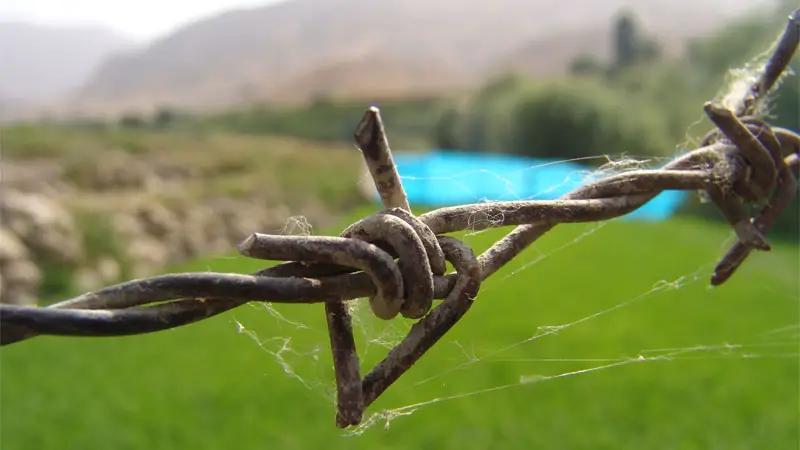
You’re not likely to find iron barbed wire at your local Home Depot or Lowe’s. As the name suggests, this barbed wire is made from iron instead of steel, making it sturdy but also much heavier. As with steel barbed wire, the iron is often galvanized or coated to provide extra protection from the elements.
9. Leather Barbed Wire
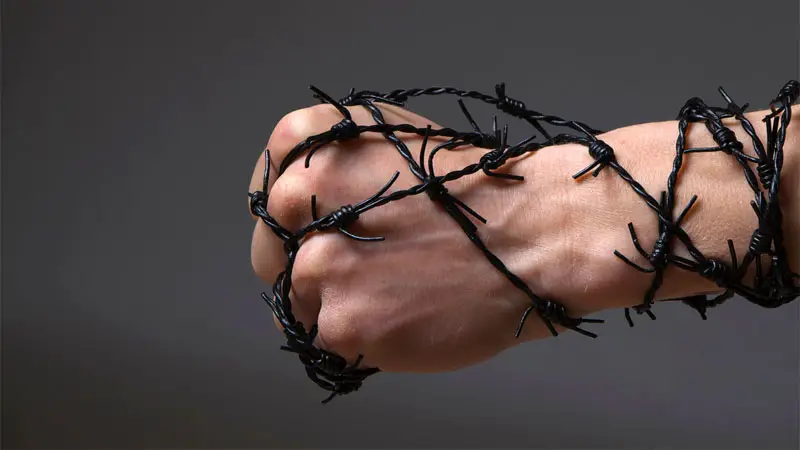
Fashion often takes some strange inspirations and runs with it. Goth and punk (and later emo) are notorious for taking such things as chains and spikes, turning them into something attractive. So it should come as no surprise that there’s a type of barbed wire designed specifically for decorative use.
Made completely out of leather, it’s almost impossible to tell the difference between this fake fashion and the real deal until you poke at the barbs. While not expensive, leather barbed wire fills a niche that means most people have never even heard of it.
However, if you plan to do some magic tricks, make an edgy (no pun intended) fashion statement, or discourage people from entering your room, leather barbed wire is the way to go.
10. PVC Coated Barbed Wire
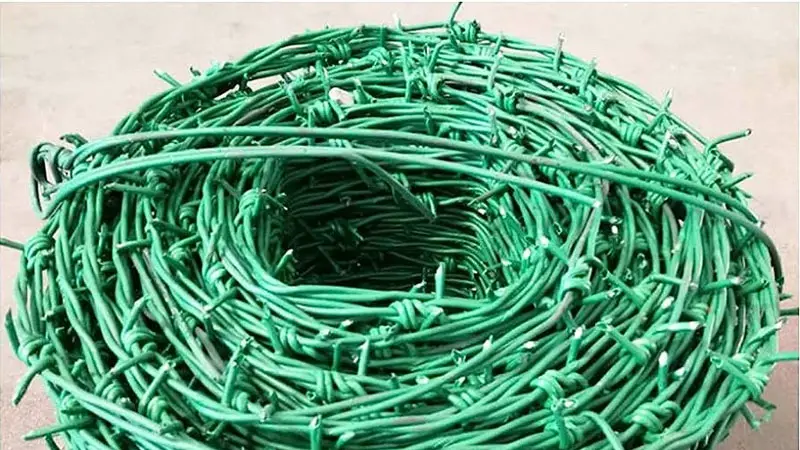
When you think of polyvinyl chloride (or PVC for short), you probably think of plumbing, but this material is actually far more versatile. In this variation of barbed wire, the stainless steel is coated in PVC to make it far more durable. This creates a lot of great benefits.
For example, the coating prevents friction damage between the strands. It also provides a waterproof barrier that protects against chemicals, dirt, and UV radiation.
While a bit more expensive, PVC coated barbed wire can be purchased in various colors and provides the same amount of anti-intruder protection as other coated types of barbed wire.
11. Razor Wire
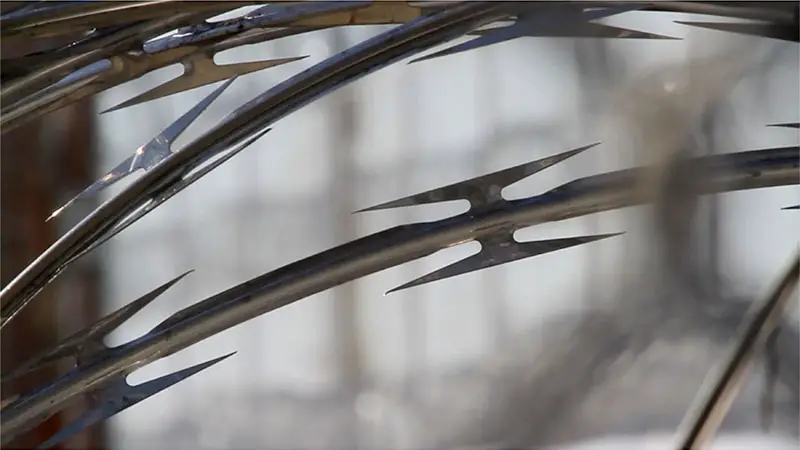
While razor wire sounds as though it has razor blades embedded in it, this type actually uses a form of steel tape that is either pinched or crimped around a central high tensile steel strand. The resulting edges are sharper than barb tips, although they’re not actually razor sharp.
Of course, their flat shape is reminiscent of a razor, contributing to the name. Trying to bypass razor wire can result in serious injury, shredding clothes and skin alike. As a result, they tend to be restricted to high security areas and are even banned in some countries.
12. Reverse Twist barbed Wire
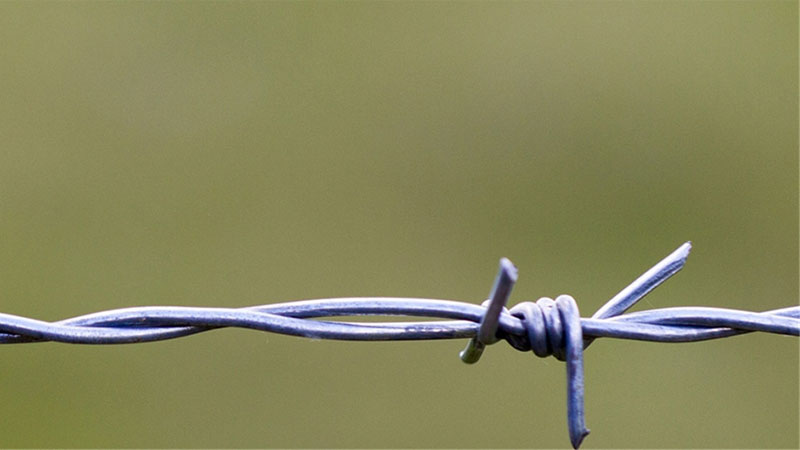
This technique twists the barbs in opposite directions around the strands. Not only does this make it harder to unravel the barbs, it also means the barbs have a much tighter grip around the strands, making it much harder to damage them.
13. Single Barb Wire
The barbs on barbed wire are formed by wrapping a short piece of wire around the main strand, with the ends of this wire cut or filed to a sharp point. When tightly wound around the central strand, the pointed ends stick out, usually facing opposite directions.
Single barb sounds exactly like what it is: a barb created from a single short piece of wire.
14. Single Strand Barbed Wire
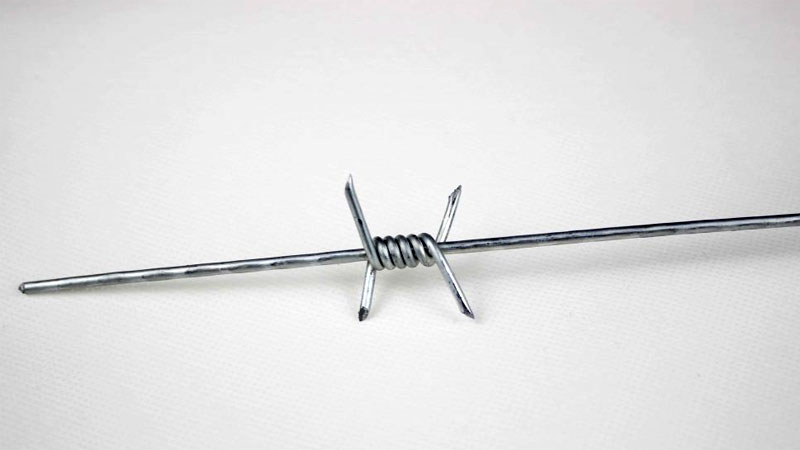
Of the many kinds of barbed wire out there, single strand is generally considered the most basic. As the name implies, this kind of barbed wire uses a single straight strand of wire with evenly-spaced barbs.
Due to their simple design and the reduced amount of materials needed, single strand barbed wire is a popular choice despite its relative frailty. You’ll commonly see it used to mark boundaries or in livestock fencing.
15. Stainless Steel Barbed Wire
Stainless steel is one of the more traditional materials used in barbed wire due to its durability and relative affordability. It also looks good and won’t rust from rain or be damaged easily by heat or major storms.
Even better, rine, sulfur, and other natural substances are far less likely to damage stainless steel than other materials, making this a good choice for fencing along beachfront properties or regions with volcanic activity.
16. Welded Razor Wire

This variation or razor wire involves the barbed steel tape being welded into little panels. These are then attached to the strand with wires or clips in much closer intervals than normal barbs.
If you’re booking for something that will do a lot of damage to trespassers, this is a great choice, although its use is highly regulated in many places due to how dangerous it is.
17. Stirred Barbed Wire
While it might sound like a fancy drink, stirred barbed wire is actually a type of razor wire. As with other forms of razor wire, it’s best to save these for use in high security areas because of the amount of damage they can cause.
Unlike many other types of razor wire, stirred barbed wire looks a lot more like traditional barbed wire and comes in coils, similar to concertina barbed wire.

